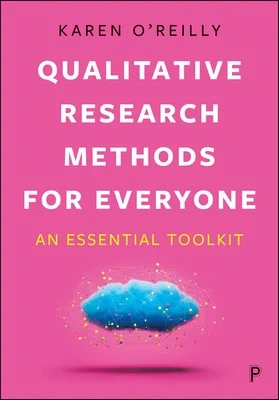Objectivist – or positivist – approaches to social research attempt to be unbiased. But at every step of the way they risk imposing the researcher’s view of the world. Flexibility, as employed in contemporary qualitative research, is more ethical, empathetic, caring and understanding, and yields better results.
Most of my teaching nowadays is with PhD students, professionals and practitioners working in applied settings: people like Zsuzsanna Iyizoba-Ebozue, a clinical oncologist with research interests in quality of life in head and neck cancers, or Brenda Herbert, whose PhD was a multimodal ethnography with children who have experienced domestic abuse and social work interventions.
Researchers in applied settings often find themselves working with people who view contemporary qualitative research as scarily subjective and messy. They can be horrified when I tell them to be adaptable when they design their research, to be aware they may need to ask different people other questions or raise new topics in a different way, to change their topic guide or even their sample as they go along. With their world view formed in line with positivist communities of practice, they ask questions like: “But if I don’t ask everyone the same thing, aren’t I being subjective?” “If I add new people or topics to my sample, won’t I need to go back to the ethics committee for new clearance?” “Shouldn’t my approach be standardised?”
They can be even more horrified when I suggest they might talk a little bit to their participants about their own lives or do things with them. “But surely,” they argue, “this is going to influence the response”.
This way of thinking is based on a specific view of objectivity that attempts to treat social science as a natural science, and human behaviour as an object that can be measured, evaluated and predicted. But human agents are not objects. Decades of philosophy and social science have taught us that humans think before they act, they consider, reflect and weigh options. Their decisions are shaped by people around them, by norms, cultures and habits, as well as by what is possible. They have dreams, desires and fears that have been formed through the lives they have lived. To understand why people do what they do, or what they might do in future, we need to understand them as complex human beings, with histories and lives. This involves meeting them part way – talking with them, sharing experiences, exploring things together.
This can get messy. It is much easier to design a rigid topic guide or a questionnaire and to work through it systematically with each person in turn according to our preconceived ideas of how it will all work in practice. The problem is we could be asking the wrong questions, the wrong way, with the wrong tone. We could be overlooking something important.
In short, rigid approaches are bad science, unethical and subjective. The researcher designs the research project. The researcher designs a topic guide or a questionnaire. The researcher decides who will be included in the research, when and how, using what methods. The researcher, the supervisor, the director and the ethics committee all influence how the work proceeds. How, then, can we be sure to listen and to learn, to challenge our own preconceptions? The answer is: by being flexible, by not being afraid to change our minds.
Being able to change your mind involves using a discussion guide flexibly and responsively, asking questions that show you are listening and hearing, and giving your research partner a voice by permitting them some control of the agenda. If I hadn’t done this, I never would have learned that time management was so crucial to harvest work.
Flexibility can involve including participants at the design stage, as the research progresses, and even in the writing and dissemination, using approaches like co-production, participatory action research, child-led research, decolonising methods and ethnography. Collaboration and participation can take shape anywhere along a continuum from learning with participants as research proceeds, to activist or militant research. The NSPCC, for example, collaborated with young people when exploring how they learn about relationships, sex and sexuality.
Research methods themselves can adapt to participants’ needs through creative methods such as arts-based, sensory, digital, tactile and multimodal approaches. Creative methods are specifically designed to be more flexible and to respond better to participants’ needs and abilities than conventional methods. Imagine, for instance, instead of asking a surgeon to grant you an interview of one or two hours, meeting her for ten minutes, then continuing the discussion online another time, followed up by a short exchange or two via email. That would fit her busy life much more than a standardised interview. It would give her time to think and reflect and to talk to you as and when she feels comfortable.
In short, letting go of some of your control and being adaptable is responsive, kind and ethical, and is more likely to yield useful results. It does not mean ‘anything goes’. The ability to be able to change your mind on the spur of the moment requires a rich, complex and deeply informed understanding of the philosophy behind social science research and its various applications. It requires a high level of research science expertise gained through reading, thinking, learning and practising.
Karen O’Reilly is Emeritus Professor of Sociology at Loughborough University and Professor II at the Norwegian University of Science and Technology, NTNU.
 Qualitative Research Methods for Everyone by Karen O’Reilly is available on Policy Press for £26.99 here.
Qualitative Research Methods for Everyone by Karen O’Reilly is available on Policy Press for £26.99 here.


